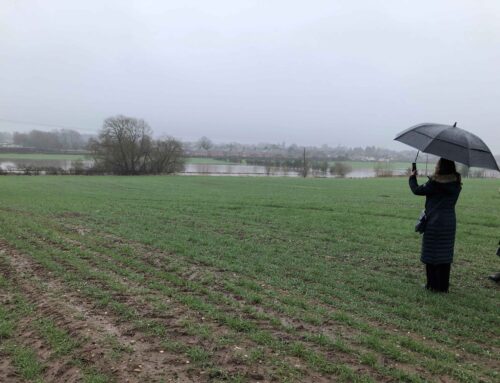Our article last year on the hot topic of design codes looked at interpreting national coding at the local level (link). In the last 18 months Hyas have been involved in the government’s national Design Code Pathfinder Programme. During that time the 2022 national pilot coding findings have been promoted, the RTPI has released their ‘Cracking the Code’ research and the requirement for authority-wide design coding in the emerging Levelling Up and Regeneration Bill (LURB) is beginning to bite.
Historically design codes have largely focused on detailed site or defined area-based opportunities. Strategic and authority-wide design
was promoted through design guides such as the ever-evolving godfather of strategic design – The Essex Design Guide – combining a mix of mandatory standards and more discretionary guidance. The now discarded zoning of planning was in part a driver for the National Model Design Code (NMDC) specifically identifying a top tier of coding at the local authority-wide level.
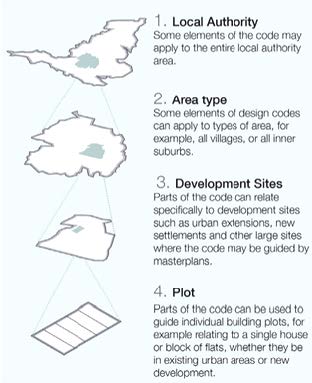
Hyas and Cumberland Council’s Design Code Pathfinder involved working closely with Office for Place (OfP) and co-consultants OPEN and Civic Engineers, on a strategic code for a large swathe of land to the south of Carlisle – the 10,000 home, landscape-le
d St Cuthbert’s Garden Village. The national programme involved regular group sessions with other local authorities and their advisors with similar strategic, often authority-wide, challenges including Trafford, Surrey and Bradford.
The Department for Levelling Up, Housing and Communities (DLUHC) and OfP are promoting 10 Criteria for E
ffective Design Coding and will be sharing more detailed findings later in the year. This article draws on our experience of the programme and related activity, and focuses on the effectiveness of coding at the strategic, often local authority-wide, level. It also provides a platform for future coding articles and webinars later in the year.
Scoping and Focus
OfP advice is to keep codes ‘short, visual and numerical wherever possible’. At the strategic and authority-wide level, where do we start and what do we focus on? We found that careful scoping of the code and exploring its focus was a critically important stage.
With the Carlisle pathfinder process we started with a collaborative scoping exercise. Our purpose was clear – to build on the recent Strategic Design Supplementary Planning Document (SPD) for the garden village, exploring key themes and locations in more detail, this time with clear ‘must have’ design requirements, given teeth by the parallel St Cuthbert’s Local Plan process.
Our spatial coverage and structure began at this stage including context, landscape character areas and emerging ‘area types’. We also highlighted ‘key locations’ where deliverable sites were emerging or where design solutions were complex. Earlier visioning work had established nine themes and our landscape-led, ‘start with the park’ mantra. For the code we needed a comprehensive approach and chose to focus on initial key themes where it could best add value – landscape of course, character and form, communities and sustainable movement.
The above outputs were supported by a scoping of the process:
- The skills and inter-disciplinary team required
- Stakeholders and our approach to co-design
- An initial timetable, integrated with the Local Plan process
- And importantly, an early understanding of the code’s status and how it would be used by development management and developers as part of broader design governance.
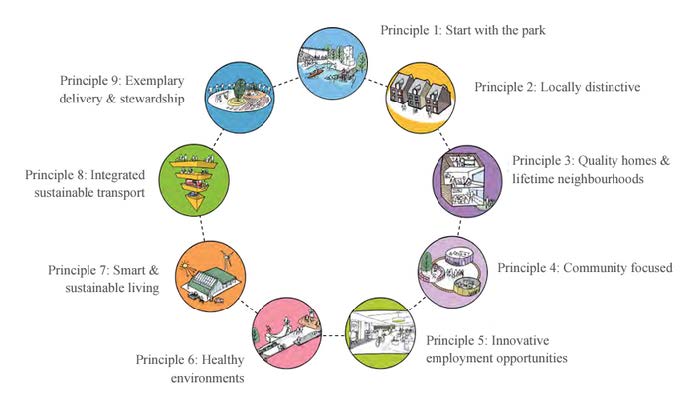
St Cuthbert’s Vision and Principles – a platform for comprehensive and focused coding themes
Themes and Localities
Strategic design codes need to balance thematic requirements with locational ones. The NMDC 10 Characteristics for a Well-designed Place provides a useful thematic starting point.
Visioning and analysis will assist local authorities in developing their own bespoke approach. In rural and environmentally sensitive locations, such as Hyas’ Mid Devon code pilot, landscape character was a key theme providing the context for a range of local rural settlement typologies and coding. The understanding and promotion of compact forms and character is important for urban authorities, as is the use of design as a tool for regeneration and a focus for ‘key areas of change’ – as in our Sefton code pilot. The latest iteration for Essex has layered quality of life themes on to the existing physical focus.
In St Cuthbert’s we focused on five themes where the code could best influence change: neighbourhoods and use, green and blue infrastructure, sustainable neighbourhoods, street types and parking, and built form and local distinctiveness. Local character studies and engagement highlighted key design cues and assisted in developing local support for compact and sustainable forms. Locational aspects of the code are structured by strategic environmental characterisation, landscape area types and development area types, including sensitive ‘edge’ coding, where the garden village creates a new countryside edge. A key objective from the scoping exercise was to provide coding not just for individual character areas but also for the interfaces between them and the landscape. This was amplified by more localised neighbourhood guidance providing clear requirements for a series of interfaces. The diagrams focus on transition, journey and sense of place at key interfaces.
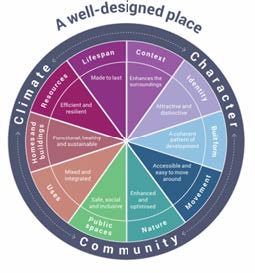
10 characteristics for a well-designed place – National Design Guide and NMDC
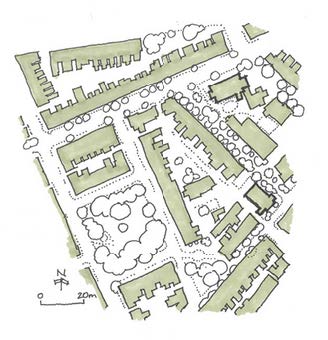
Carlisle local character studies – developing support for compact forms
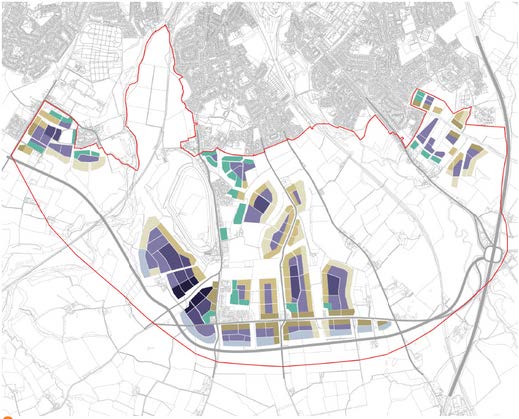
St Cuthbert’s development area types
Strategy and Detail, Certainty and Flexibility
The NMDC outlines a three stage, seven step process for coding – analysis, vision, code – supported by an inclusive engagement process. At St Cuthbert’s a clear follow-on stage was established involving the embedding of coding into planning and delivery, providing teeth. Essex have incorporated feedback and review into their processes.
At the authority-wide level, masterplanning may not always be appropriate, but some form of spatial diagram is useful. Strategic coding can establish the structure and inspiration for more detailed area and site codes – including those prepared by developers and their designers. Standards for highways, streets and parking are appropriate in the context of sustainable transport. However, as Matthew Carmona states in his blog series, these should not be automatically carried through from existing documents and need to support the code’s placemaking objectives.
By definition codes should be binary, although most of the pathfinders have a balance of mandatory and discretionary elements. The Trafford Design Code also takes a ‘conform or justify’ approach to provide flexibility and not stifle innovation. The St Cuthbert’s code balances definitive language with a degree of flexibility including narrow density ranges for area types in the context of broader character and built form. OPEN’s 3d axonometric diagrams clearly demonstrate key design moves without being overly prescriptive in advance of site-specific design. Effectiveness is key – the earlier design SPD and close working with development management and developers sharpened our specific drafting of requirements and document navigability.
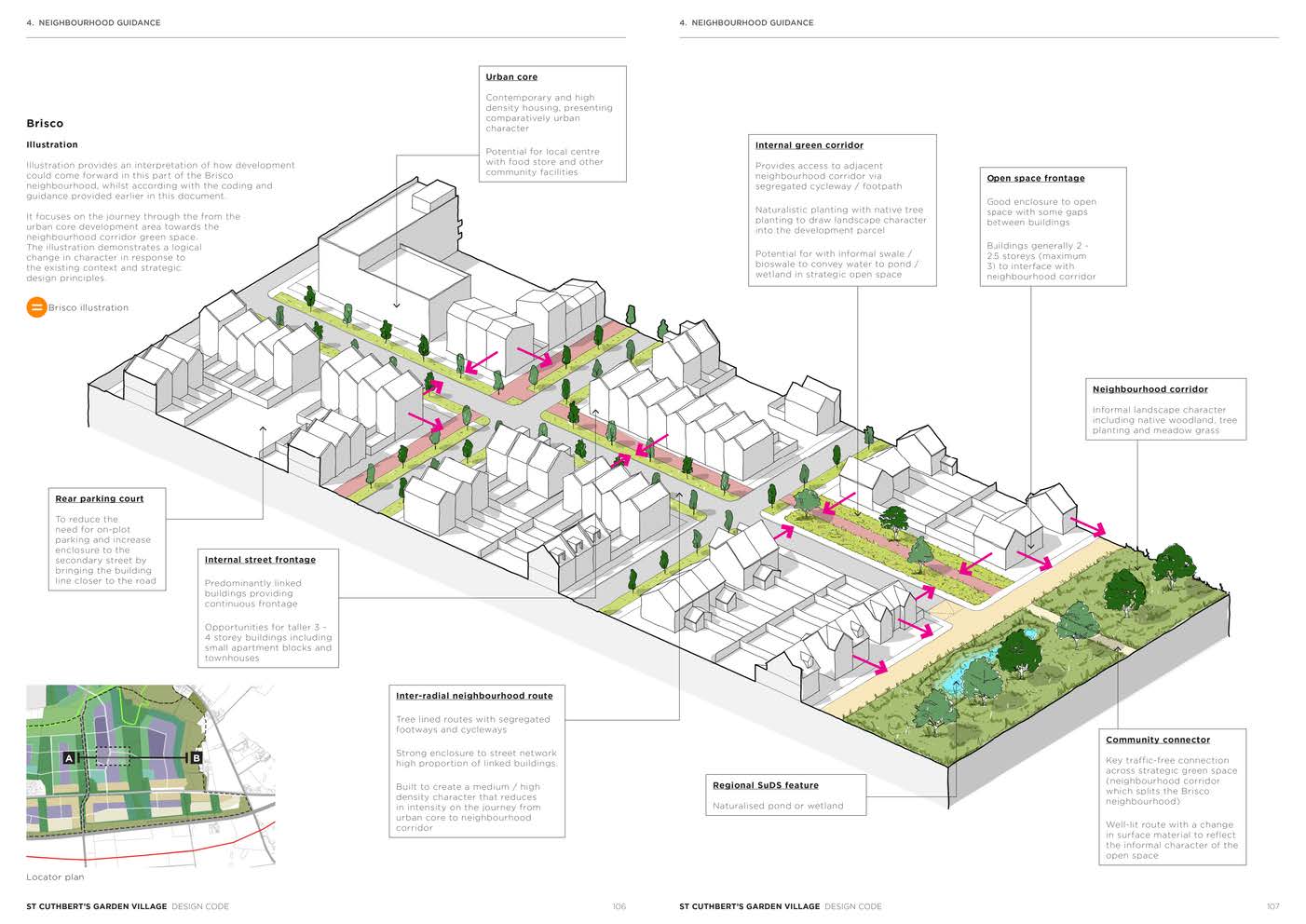
St Cuthbert’s sample transect
Lessons for Strategic and Authority-wide Coding
The national pilot and pathfinder programmes supplemented by our involvement in the practical implementation of guidance and codes over the years, has generated key themes for discussion, especially at the strategic level. There are some critical questions to address when embarking on a strategic / area wide code, to ensure an effective and proportionate approach:
- Scoping and focus – what is the fundamental purpose of our code and the vision for our localities?
- Coding themes – how do we best balance a comprehensive approach with a focus on key themes that are most relevant to our area and its unique characteristics?
- Relevance across localities – how can we be responsive to the disparate needs of our varied communities and focus on key areas of change?
- Certainty and flexibility – where do we best focus clear policy aligned mandatory requirements and how can we balance this where more flexibility and future proofing is required?
- Effectiveness – how do we best resource and develop a coding product and process that helps us deliver and manage the quality of place that we desire for our communities?
Local authorities and their partners now have the challenge of updating, creating and utilising design codes for their localities. National guidance, together with experience from the Pilot and Pathfinder Programmes, are providing inspiration and practical examples, but the Government recognises that more is needed to ensure design coding becomes mainstream – including tackling local capacity and the promotion of the Planning Skills Delivery Fund. There is a window of opportunity here for us all to push this important agenda forward – and sustain it.
Think piece by Jim Fox, Associate. August 2023

